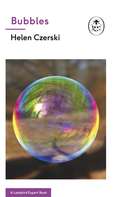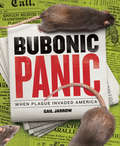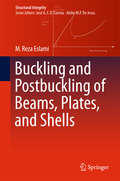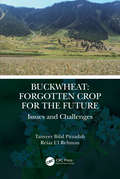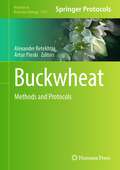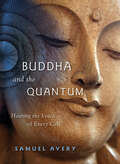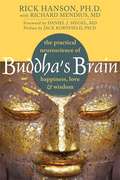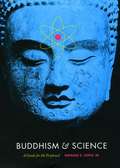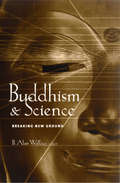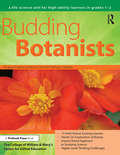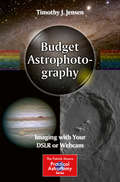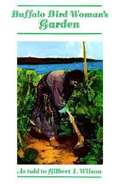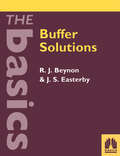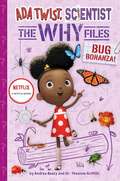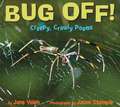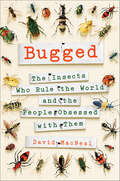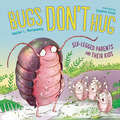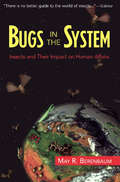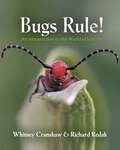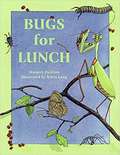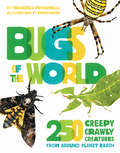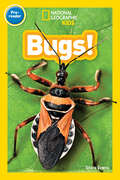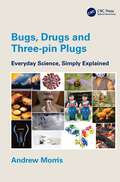- Table View
- List View
Bubbles: A Ladybird Expert Book (The Ladybird Expert Series #24)
by Helen CzerskiPart of the new Ladybird Expert series, Bubbles is a clear, surprising and entertaining introduction to the science of bubbles. Bubbles are beautiful, ephemeral, fun, fragile, jolly and slightly unpredictable. We're all familiar with them, but we don't often ask what they actually are. The great scientists of the Western world - Robert Hooke, Isaac Newton, Lord Rayleigh and more - studied bubbles seriously. They recognised that they had a lot to say about the nature of the physical world, and they poked, prodded and listened to find out what it was. In the years since, we've learned that this bulbous arrangement of liquid and gas does things that neither the gas or the liquid could do by itself. Written by the celebrated physicist and oceanographer Helen Czerski, Bubbles explores how everything from the way drinks taste to the Earth's temperature are influenced by bubbles. This book has a message: never underestimate a bubble!Written by the leading lights and most outstanding communicators in their fields, the Ladybird Expert books provide clear, accessible and authoritative introductions to subjects drawn from science, history and culture.For an adult readership, the Ladybird Expert series is produced in the same iconic small hardback format pioneered by the original Ladybirds. Each beautifully illustrated book features the first new illustrations produced in the original Ladybird style for nearly forty years.
Bubonic Panic: When Plague Invaded America
by Gail JarrowIn March 1900, San Francisco's health department investigated a strange and horrible death in Chinatown. A man had died of bubonic plague, one of the world's deadliest diseases. But how could that be possible? <P><P> Bubonic Panic tells the true story of America's first plague epidemic--the public health doctors who desperately fought to end it, the political leaders who tried to keep it hidden, and the brave scientists who uncovered the plague's secrets. <P><P> Once again, acclaimed author and scientific expert Gail Jarrow brings the history of a medical mystery to life in vivid and exciting detail for young readers. This title includes photographs and drawings, a glossary, a timeline, further resources, an author's note, a bibliography, and source notes.
Buckling and Postbuckling of Beams, Plates, and Shells (Structural Integrity #1)
by M. Reza EslamiThis book contains eight chapters treating the stability of all major areas of the flexural theory. It covers the stability of structures under mechanical and thermal loads and all areas of structural, loading and material types. The structural element may be assumed to be made of a homogeneous/isotropic material, or of a functionally graded material. Structures may experience the bifurcation phenomenon, or they may follow the postbuckling path. This volume explains all these aspects in detail. The book is self-contained and the necessary mathematical concepts and numerical methods are presented in such a way that the reader may easily follow the topics based on these basic tools. It is intended for people working or interested in areas of structural stability under mechanical and/or thermal loads. Some basic knowledge in classical mechanics and theory of elasticity is required.
Buckwheat: Issues and Challenges
by Reiaz Ul Rehman Tanveer Bilal PirzadahBuckwheat: Forgotten crop for the Future offers an overview of this globally important crop, including its history, origin and its importance to functional food sector. Due to its short growth span, ability to grow at higher altitudes and superior quality of its protein, buckwheat is considered as an important crop for addressing global food requirements. The book also provides upto date information on the abiotic stress tolerance properties of the crop including its hyperaccumulating potential. The book talks about the issues and challenges being faced for adopting this crop and the ways to address and overcome these limitations. The book guides the readers through different varietal adaptations and provides information on appropriate research directions. This book would serve as an ideal guide for researchers and advanced-level students seeking better understanding of the buckwheat crop. Introduces the buckwheat’s origin, history and diversity Summarizes the distribution of buckwheat species around the world Presents agro-techniques and cultivation practices of buckwheat Explores the nutraceutical potential of buckwheat Includes adaptation of buckwheat towards different environmental factors affecting growth and production Discusses the reasons for declining buckwheat production Addresses the strategies for buckwheat crop improvement
Buckwheat: Methods and Protocols (Methods in Molecular Biology #2791)
by Alexander Betekhtin Artur PinskiThis detailed volume describes the most recent methodology for buckwheat research. Buckwheat serves as a promising functional food source containing various phenolic compounds, such as rutin, quercetin, and C-glycosylflavones, which have a positive therapeutic or dietary effect for promoting human health. This book explores techniques for studying this pseudocereal, namely the two most widely cultivated species, F. esculentum (common buckwheat) and F. tataricum (Tartary buckwheat). Written for the highly successful Methods in Molecular Biology series, chapters include introductions to their respective topics, lists of the necessary materials and reagents, step-by-step and readily reproducible laboratory protocols, and tips on troubleshooting and avoiding known pitfalls. Practical and comprehensible, Buckwheat: Methods and Protocols is an ideal guide for plant scientists working in this field.
Buddha and the Quantum: Hearing the Voice of Every Cell
by Samuel AveryBuddha and the Quantum is about the connection between meditation and physics. Many books show parallels between consciousness and physics; a few of these attempt to explain consciousness in terms of the physics of everyday experience.
Buddha's Brain: The Practical Neuroscience of Happiness, Love, and Wisdom
by Rick Hanson Richard MendiusJesus, Moses, Mohammed, Gandhi, and the Buddha all had brains built essentially like anyone else's, yet they were able to harness their thoughts and shape their patterns of thinking in ways that changed history. With new breakthroughs in modern neuroscience and the wisdom of thousands of years of contemplative practice, it is possible for us to shape our own thoughts in a similar way for greater happiness, love, compassion, and wisdom. Buddha's Brain joins the forces of modern neuroscience with ancient contemplative teachings to show readers how they can work toward greater emotional well-being, healthier relationships, more effective actions, and deepened religious and spiritual understanding. This book will explain how the core elements of both psychological well-being and religious or spiritual life-virtue, mindfulness, and wisdom--are based in the core functions of the brain: regulating, learning, and valuing. Readers will also learn practical ways to apply this information, as the book offers many exercises they can do to tap the unused potential of the brain and rewire it over time for greater peace and well-being.
Buddhism and Medicine: An Anthology of Premodern Sources
by C. Pierce SalgueroFrom its earliest days, Buddhism has been closely intertwined with medicine. Buddhism and Medicine is a singular collection showcasing the generative relationship and mutual influence between these fields across premodern Asia. The anthology combines dozens of English-language translations of premodern Buddhist texts with contextualizing introductions by leading international scholars in Buddhist studies, the history of medicine, and a range of other fields.These sources explore in detail medical topics ranging from the development of fetal anatomy in the womb to nursing, hospice, dietary regimen, magical powers, visualization, and other healing knowledge. Works translated here include meditation guides, popular narratives, ritual manuals, spells texts, monastic disciplinary codes, recipe inscriptions, philosophical treatises, poetry, works by physicians, and other genres. All together, these selections and their introductions provide a comprehensive overview of Buddhist healing throughout Asia. They also demonstrate the central place of healing in Buddhist practice and in the daily life of the premodern world.This anthology is a companion volume to Buddhism and Medicine: An Anthology of Modern and Contemporary Sources (Columbia, 2019).
Buddhism and Science: A Guide for the Perplexed
by Donald S. LopezBeginning in the nineteenth century and continuing to the present day, both Buddhists and admirers of Buddhism have proclaimed the compatibility of Buddhism and science. In "Buddhism and Science", Donald S. Lopez Jr. is less interested in evaluating the accuracy of such claims than in exploring how and why these two seemingly disparate modes of understanding, the inner and outer universes, have been so persistently linked.
Buddhism and Science: Breaking New Ground (Columbia Series in Science and Religion)
by Alan WallaceBuddhism and Science brings together distinguished philosophers, Buddhist scholars, physicists, and cognitive scientists to examine the contrasts and connections between the worlds of Western science and Eastern spirituality. This compilation was inspired by a suggestion made by His Holiness the Dalai Lama, himself one of the contributors, after one of a series of cross-cultural scientific dialogues in Dharamsala, India, sponsored by the Mind and Life Institute. Other contributors such as William L. Ames, Matthieu Ricard, and Stephen LaBerge assess not only the fruits of inquiry from East and West but also shed light on the underlying assumptions of these disparate worldviews. Their essays creatively address a broad range of topics: from quantum theory's surprising affinities with the Buddhist concept of emptiness, to the increasing need in the West for a more contemplative science attuned to the first-person investigation of the mind, to the important ways in which the psychological study of "lucid dreaming" maps similar terrain to the cultivation of the Tibetan Buddhist discipline of dream yoga. Reflecting its wide variety of topics, Buddhism and Science is comprised of three sections. The first presents two historical overviews of the engagements between Buddhism and modern science or, rather, how Buddhism and modern science have defined, rivaled, or complemented one another. The second describes the ways Buddhism and the cognitive sciences inform each other; the third addresses points of intersection between Buddhism and the physical sciences. On the broadest level this work illuminates how different ways of exploring the nature of human identity, the mind, and the universe at large can enrich and enlighten one another.
Budding Botanists: A Life Science Unit for High-Ability Learners in Grades 1-2
by Clg Of William And Mary/Ctr Gift EdBudding Botanists, a life science unit for grades 1-2, engages students in an investigation of plant life as they assume the role of botanists. Team members seek to understand the structure, nature, and life cycle of plants, and to answer questions such as “How can plants be used to fuel cars?”Winner of the 2008 NAGC Curriculum Studies Award, Budding Botanists was developed by the Center for Gifted Education at The College of William and Mary, to offer advanced curriculum supported by years of research. The Center's materials have received national recognition from the United States Department of Education and the National Association for Gifted Children, and they are widely used both nationally and internationally.Each of the books in this series offers curriculum that focuses on advanced content and higher level processes. The science units contain simulations of real-world problems, and students experience the work of real science by using data-handling skills, analyzing information, and evaluating results. The mathematics units provide sophisticated ideas and concepts, challenging extensions, higher order thinking skills, and opportunities for student exploration based on interest. These materials are a must for any teacher seeking to challenge and engage learners and increase achievement.Grades 1-2
Budget Astrophotography: Imaging with Your DSLR or Webcam (The Patrick Moore Practical Astronomy Series)
by Timothy J. JensenHere are clear explanations of how to make superb astronomical deep-sky images using only a DSLR or webcam and an astronomical telescope - no expensive dedicated CCD cameras needed! The book is written for amateur astronomers interested in budget astrophotography - the deep sky, not just the Moon and planets - and for those who want to improve their imaging skills using DSLR and webcams. It is even possible to use existing (non-specialist astronomical) equipment for scientific applications such as high resolution planetary and lunar photography, astrometry, photometry, and spectroscopy. The introduction of the CCD revolutionized astrophotography. The availability of this technology to the amateur astronomy community has allowed advanced science and imaging techniques to become available to almost anyone willing to take the time to learn a few, simple techniques. Specialized cooled-chip CCD imagers are capable of superb results in the right hands - but they are all very expensive. If budget is important, the reader is advised on using a standard camera instead. Jensen provides techniques useful in acquiring beautiful high-quality images and high level scientific data in one accessible and easy-to-read book. It introduces techniques that will allow the reader to use more economical DSLR cameras - that are of course also used for day-to-day photography - to produce images and data of high quality, without a large cash investment.
Buffalo Bird Womans Garden: Agriculture of the Hidatsa Indians
by Jeffery R. Hanson Gilbert L. WilsonFrom the book: Buffalo Bird Woman, known in Hidatsa as Maxidiwiac, was born about 1839 in an earth lodge along the Knife River in present-day North Dakota. In 1845 her people moved upstream and built Like-a-fishhook village, which they shared with the Mandan and Arikara. There Buffalo Bird Woman grew up to become an expert gardener of the Hidatsa tribe. Using agricultural practices centuries old, she and the women of her family grew corn, beans, squash, and sunflowers in the fertile bottomlands of the Missouri River. In the mid-1880s, U.S. government policies forced the break up of Like-a-fishhook village and the dispersal of Indian families onto individual allotments on the Fort Berthold Reservation, but Hidatsa women continued to grow the vegetables that have provided Midwestern farmers some of their most important crops. In Buffalo Bird Woman's Garden, first published in 1917 as Agriculture of the Hidatsa Indians: An Indian Interpretation, anthropologist Gilbert L. Wilson transcribed in meticulous detail the knowledge given by this consummate gardener. Following an annual round, Buffalo Bird Woman describes field care and preparation, planting, harvesting, processing, and storing of vegetables. In addition, she provides recipes for cooking traditional Hidatsa dishes and recounts songs and ceremonies that were essential to a good harvest. Her first-person narrative provides today's gardener with a guide to an agricultural method free from fertilizers, pesticides, and herbicides. ... Squash Dolls There is one other thing I will tell before we forsake the subject of squashes. Little girls of ten or eleven years of age used to make dolls of squashes. When the squashes were brought in from the field, the little girls would go to the pile and pick out squashes that were proper for dolls. I have done so, myself. We used to pick out the long ones that were parti-colored; squashes whose tops were white or yellow and the bottoms of some other color. We put no decorations on these squashes that we had for dolls. Each little girl carried her squash about in her arms and sang for it as for a babe. Often she carried it on her back, in her calf skin robe. ... This is a most fascinating read whether or not one likes to garden.
Buffer Solutions (THE BASICS (Garland Science))
by Professor Rob Beynon J EasterbyAn indispensable guide to buffers and to understanding the principles behind their use. Helps the user to avoid common errors in preparing buffers and their solutions.A must for researchers in the biological sciences, this valuable book takes the time to explain something often taken for granted - buffers used in experiments. It answers the common questions such as: which buffer should I choose? What about the temperature effects? What about ionic strength? Why is the buffer with the biggest temperature variation used in PCR? It provides even the most experienced researchers with the means to understand the fundamental principles behind their preparation and use - an indispensable guide essential for everyone using buffers.
Bug Bonanza! (Questioneers)
by Andrea Beaty Theanne GriffithBug Bonanza! is the fourth book in a nonfiction early-reader series about simple science concepts starring Ada Twist, Scientist, spun-off from Andrea Beaty’s New York Times bestselling Questioneers series and the hit Netflix show—cowritten by neuroscientist Dr. Theanne Griffith. <P><P> How do bees fly? Why does a spider weave a web? And why are bugs so important to our world? Ada Twist, Scientist: The Why Files is the perfect nonfiction resource for all these questions pondered by the youngest scientists of tomorrow, as they learn along with Ada. Designed in a scrapbook format, these books combine art from the Netflix show, illustrations, and photography to bring simple science concepts to life.
Bug Brigade (Michael Dahl Presents: Side-Splitting Stories)
by Matthew K. ManningThey're the world's greatest heroes! The grim avengers of the night! The planet's first line of defense against supervillains and alien threats! They're . . . the Bug Brigade? Doug, Josie, Kira, and Reginald were all normal sixth graders at the start of their field trip to the Blue Mountain Science Museum. Proud members of the Bug Society of Littleton, the friends are thrilled to explore a private wing of the museum where they can learn all about their favorite insects. But when they get mixed up in a scientist's experiment involving radioactive bugs, they find themselves in over their heads (and antennas!). The Bug Brigade must swarm together to fight off an evil insect villain. Will their newfound buggy superpowers be up to the test?
Bug Off!: Creepy, Crawly Poems
by Jane Yolen Jason StempleIn Bug Off! readers meet thirteen bugs in playful, humorous poems and startling, intimate photographs. Nonfiction prose paragraphs broaden the perspective: Children will learn how bees make honey, that many butterflies can taste food with their feet, that lovebugs can fly higher than the Empire State Building, and much more. The subjects will be familiar to kids—a fly, praying mantis, honeybee, butterfly, daddy longlegs, lovebug, dragonfly, tick, ladybug, spider, grasshopper, ants, and a swarm of bugs—but the poems, photographs, and nonfiction passages present them in eye-opening new ways. Includes an author's note that encourages readers to write their own bug poems.
Bugged: The Insects Who Rule the World and the People Obsessed with Them
by David MacNeal"Creepy, beautiful, icky and amazing." —Penny Le Couteur, author of Napoleon's ButtonInsects have been shaping our ecological world and plant life for over 400 million years. In fact, our world is essentially run by bugs—there are 1.4 billion for every human on the planet. In Bugged, journalist David MacNeal takes us on an off-beat scientific journey that weaves together history, travel, and culture in order to define our relationship with these mini-monsters. MacNeal introduces a cast of bug-lovers—from a woman facilitating tarantula sex and an exterminator nursing bedbugs (on his own blood), to a kingpin of the black market insect trade and a “maggotologist”—who obsess over the crucial role insects play in our everyday lives. Just like bugs, this book is global in its scope, diversity, and intrigue. Hands-on with pet beetles in Japan, releasing lab-raised mosquitoes in Brazil, beekeeping on a Greek island, or using urine and antlers as means of ancient pest control, MacNeal’s quest appeals to the squeamish and brave alike. Demonstrating insects’ amazingly complex mechanics, he strings together varied interactions we humans have with them, like extermination, epidemics, and biomimicry. And, when the journey comes to an end, MacNeal examines their commercial role in our world in an effort to help us ultimately cherish (and maybe even eat) bugs.
Bugs Don't Hug: Six-Legged Parents and Their Kids
by Heather L. MontgomeryMeet the mamas and papas of the insect world in this fresh and funny nonfiction look at how bugs are like us from popular science author and teacher Heather Montgomery.Most insects don't take care of their young, but some do--in surprising ways. Some bugs clean up after their messy little ones, cater to their picky eaters, and yes--hug their baby bugs. A fun and clever look at parenting in the insect world, perfect for backyard scientists and their own moms and dads. Back matter includes further information about the insects and a list of resources for young readers.
Bugs In The System: Insects And Their Impact On Human Affairs
by May R. BerenbaumAn introduction to insect physiology, genetics and behaviour which looks at the interaction between humans and insects, and explores both the positive and negative aspects of the relationship.
Bugs Rule!: An Introduction to the World of Insects
by Richard Redak Whitney CranshawThe essential illustrated introduction to insects for nonscience majorsBugs Rule! provides a lively introduction to the biology and natural history of insects and their noninsect cousins, such as spiders, scorpions, and centipedes. This richly illustrated textbook features more than 830 color photos, a concise overview of the basics of entomology, and numerous sidebars that highlight and explain key points. Detailed chapters cover each of the major insect groups, describing their physiology, behaviors, feeding habits, reproduction, human interactions, and more.Ideal for nonscience majors and anyone seeking to learn more about insects and their arthropod relatives, Bugs Rule! offers a one-of-a-kind gateway into the world of these amazing creatures.Places a greater emphasis on natural history than standard textbooks on the subjectCovers the biology and natural history of all the insect ordersProvides a thorough review of the noninsect arthropods, such as spiders, scorpions, centipedes, millipedes, and crustaceansFeatures more than 830 color photosHighlights the importance of insects and other arthropods, including their impact on human societyAn online illustration package is available to professors
Bugs for Lunch (Fountas & Pinnell LLI Blue #Level J)
by Margery Facklam Sylvia LongDiscover the variety of bug-eaters—animal, plant, even human—in this exploration of both poetry and the natural world. Facklam’s playful rhymes mixed with Long’s vivid illustrations introduce young readers to an array of creatures as they munch on lunch. From a mantis perched and ready to prey on ladybugs, a spider trapping a fly, to the honey-drenched fur of a big brown bear chewing on a hive full of bees, Bugs for Lunch will give curious readers plenty of food for thought delivered in a playful package.
Bugs of the World: 250 Creepy-Crawly Creatures from Around Planet Earth
by Francesco TomasinelliFrom moths and beetles to worms and spiders, this completely illustrated, fact-filled book features hundreds of creepy-crawlies for kids to discover and explore.This gorgeously illustrated book reveals the hidden world of some of the most mind-boggling insects. Divided into categorical sections like herbivores and predators, Bugs of the World includes beetles, wasps, bees, ants, caterpillars, butterflies, dragonflies, spiders, flies, crickets and grasshoppers, centipedes and millipedes, and more. Each of the 250 insects featured is accompanied by beautiful illustrations and facts about the creature, including its common name and scientific name, its size, its continent of origin, and a brief description of its unique characteristics. Kids will also learn about the different life cycles of insects, why they are important to ecology and our world, the planet's most dangerous insects, how bugs camouflage themselves, and so much more.
Bugs! (Readers)
by Shira EvansYoung readers learn all about insects in this new Pre-reader from National Geographic Kids.Through text features such as a vocabulary tree and wrap-up activity, kids will be introduced to vocabulary in concept groups, helping them make connections between words and expand their understanding of the world. Along with brilliant photos and a fun approach to reading, National Geographic Readers are a winning formula with kids, parents, and educators.
Bugs, Drugs and Three-pin Plugs: Everyday Science, Simply Explained
by Andrew MorrisFor the millions who remain curious about the world around them, but gained little from science at school, this book offers a way forward. Based on live discussions with adults from all walks of life, each chapter begins with an everyday experience, like swallowing a pill or watching a bee on a flower. The main scientific ideas underlying each topic are then explored, so that understanding of a set of fundamental concepts builds up gradually throughout the book. In contrast to more traditional approaches to science learning, topics range freely across the subject areas. The story of Covid, for example includes aspects of biology, chemistry, mathematics and social behaviour. Plain English is used throughout and mathematical expressions are avoided. Key points are illustrated with clear diagrams and photographs. By drawing on questions and perspectives of ordinary people, the book offers an introduction to basic ideas in science as a whole, rather than any one particular subject. For the adult wishing to make good a gap in their understanding it provides a starting point for entering the rich world of popular science.
